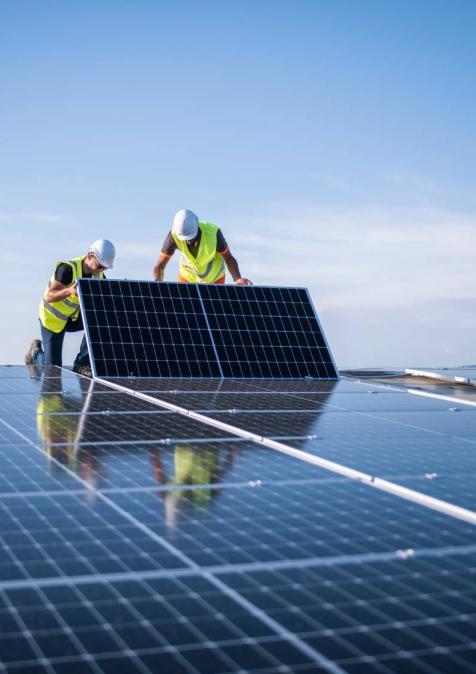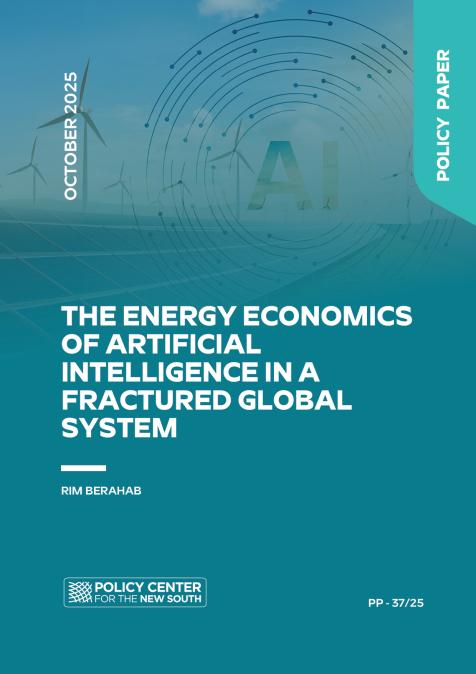Publications /
Opinion
The sobering historical moment we are living through presents a chance to reflect and to renew our resolve to take action to save lives, improve livelihoods, and build resilience.
The coronavirus (COVID-19) pandemic has caused the loss of half a million lives and counting, according to the United Nations, and adversely affected the livelihoods of hundreds of millions more, resulting in the worst economic crisis since the Great Depression, according to the International Monetary Fund (IMF).
At the same time, the world faces another emergency, distinct and yet overlapping, timebound and of almost unspeakable scale—the climate and ecological crisis.
The interlinkage between these global crises is captured in an unusual collaboration between the IMF and the International Energy Agency (IEA), who published a report on June 18 titled Sustainable Recovery. Of the litany of headlines provoked by this special report, the most striking is probably: ‘World has six months to avert climate crisis, says energy expert’.
The report proposes tackling the various crises together, recommending a global strategic investment program of $3 trillion in energy systems over three years, notably into energy efficiency, modernization and expansion of power grids, and deployment of wind and solar. According to the IEA/IMF analysis, the proposed investment would bring outsize benefits including:
- - Economic productivity: The proposed investment program would create savings and improve productivity over the longerterm, allowing the same economic output to be created from less economic inputs, enhancing macroeconomic performance.
- - Economic growth: Responding to a global recession, the program would boost the annual growth of developing countries by around 1.3%, resulting in global GDP overall in 2023 being 3.5% higher than it would be otherwise
- - Jobs and livelihoods: At a time of eyewatering job losses around the world, the investment program would save or create roughly 9 million jobs each year, over the next three years.
- - Public health and environmental quality: The investment would decrease global air pollution by 5%, at a time when air pollution has been linked to higher rates of COVID19, and when disadvantaged communities are often disproportionately afflicted by poor air quality.
- - Development and living standards: The investment program would advance delivery of the Sustainable Development Goals, bringing access to clean cooking to approximately 420 million people in lowincome countries, while giving nearly 270 million people access to electricity.
- - Climate crisis: The investment would make 2019 the definitive peak in global greenhouse gas emissions, avoiding a bounceback, and would improve the world’s odds of meeting international climate goals under the Paris Agreement and of avoiding planetary tipping points toward climate catastrophe.
That large-scale investment to improve energy systems can deliver major benefits across diverse fronts is not, of course, a new idea. There has been a strategic case for such energy investment for many years. (As energy expert Michael Liebreich observes: although the essential role of efficiency in the economy was acknowledged by Benjamin Disraeli in 1868, “sometimes it takes decades for a sector to become an overnight success”.)
What is new, however, is the political moment we are now in. As the IEA and IMF observe, countries around the world have already responded to the economic crisis with extraordinary measures equaling about $9 trillion, with significant further spending on the way.
This historic public expenditure means an acute danger of investment in sectors such as fossil fuels which are economically risky (aside from their risk to the climate). However, the current moment also raises a more general danger of investment in projects or industries that represent sub-par use of public monies, missing key avenues for positive transformation with better economic multipliers.
People talk about energy being the lifeblood of the economy, but the essential importance of energy systems to macroeconomic and fiscal performance in many countries is too often overlooked. Even ignoring for one moment the existential threats posed by climate change, building modern and affordable energy systems worldwide is an opportunity for countries to invest to save and create pure productivity gains. It allows policymakers to create jobs relatively quickly and in geographically targeted ways, while creating savings that put money back in the pockets of households.
Countries around the world consistently suffer unnecessary economic losses due to energy systems, caused by non-competitive fossil assets, poor-performing energy grids, inefficient market design locking in incumbents, and outdated power sector development plans. These create heavy burdens on public finance for countries that can ill afford to bear them, sucking away money that could be better spent on health, education, or other development outcomes.
That said of course, we cannot simply ignore the climate crisis—and while the science calls for us to halve emissions in a decade and reach net-zero by 2050, energy happens to be by far the greatest source of global emissions.
The IEA and IMF are therefore correct to shine a spotlight on energy systems in particular. Granted, their analysis may be justifiably critiqued for not being fully aligned with the 1.5°C goal, or even for not being sufficiently ambitious—a parallel analysis from the International Renewable Energy Agency (IRENA) calls for $6 trillion in clean energy investments over the same three year period, meaning an annual investment figure approximately double that called for by the IEA.
However, what the IEA and IMF get right is that at a moment of concurrent crises, a strategic multi-crisis response is precisely what the world needs. What the IEA and IMF do not have is the capacity to implement such a proposal on their own—both, moreover, suffer from trust deficits, resulting from the IEA’s past positioning on climate change and the IMF’s self-acknowledged mistakes in the developing world.
Whether a much-needed global investment drive in energy systems is pursued will therefore ultimately depend on the choices of governments, in both developed and developing countries. Private investors have expressed support for the proposal, but implementation will require international cooperation and considerable diplomatic and institutional innovation by governments, with current efforts falling short of what is required.
The highest levels of government, especially finance ministers, must step up to ensure the mobilization of additional financial resources. While both the financing of the 2030 Sustainable Development Goals as well as the $100 billion pledge under the UNFCCC appear to be in jeopardy, a joint study by a range of organisations has found that many G20 countries are spending more on fossil fuels than on clean energy. Redirection of public finance is therefore needed, with new capital pledges alongside better leveraging of multilateral development banks and other public banks, as well as international debt relief and other efforts to improve fiscal space.
All this ambition is imperative simply because 2020 is a policy window which, once closed, will not come again. In provoking headlines such as ‘six months to avert climate crisis’, the IMF and IEA appear to be issuing a warning more stark than the ‘12 years to save the planet’ headlines arising from the IPCC’s Special Report in 2018, which helped give rise to the year of popular mobilization on climate that was 2019.
The basic physics, of course, have not changed—what has changed is the politics. With decision-making processes and investments frontloaded, how the rest of the decade will go will be decided in much shorter timeframes than anticipated. IMF Managing Director Kristalina Georgieva has said that this will be “a year to revive or lose the Paris agreement”. Fatih Birol, the IEA Executive Director, observes, “[t]he next three years will determine the course of the next 30 years and beyond”, and so he warns of plans made in the next six months.
Keen observers of policy know that much of the next three years of investment will be decided by choices in the coming months. Students of climate science understand that the course of emissions in the next 30 years will determine the extent of catastrophic climate change, of unnecessary suffering and loss of life, and the fate of many vulnerable communities, to ultimately be etched in the Earth’s geological record for millennia to come.
The author is an alum of the 2019 Atlantic Dialogues Emerging Leaders program and Policy Advisor at the international climate change think tank E3G.
The opinions expressed in this article belong to the author.





